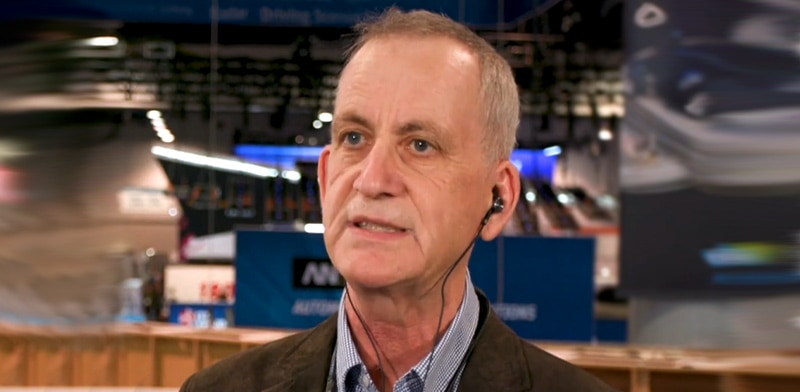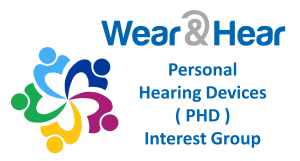Our Story
After first setting foot in Israel in 1991, I spent 11 years switching between jobs in medical and non-medical companies.
Then, for the last 17 years, I have stayed put, working in my own company developing digital sound enhancement technologies for voice communication and consumer electronics. Today my company, Alango Technologies Ltd., is rather successful. It has survived while all its well-funded early competitors no longer exist (although new ones have sprung up, of course). It is growing without the benefit of external investments, and it is profitable enough to allow me to invest in new areas. Logically, it is in a health-related field again. The new area is an integration of consumer electronics (CE) devices with personal hearing enhancement. You can read more about my business journey in this article published by Globes: Alango: Handsfree car phones to hearing aids.
Why
According to recent data from World Health Organization:
“Around 466 million people worldwide have disabling hearing loss, and 34 million of these are children.”
“It is estimated that by 2050 over 900 million people will have disabling hearing loss.”
“Global production of hearing aids meets less than 10% of global need and less than 3% of developing countries’ needs. The lack of availability of services for fitting and maintaining these devices, and the lack of batteries are also barriers in many low-income settings.”
To me, the situation seems paradoxical. I’ve been in the digital voice enhancement business for more than 20 years and I know that hearing aids are not more complicated than a smartphone, even if we consider only the voice processing aspects. Just think about all the other types of technology integrated into smartphones. Even the miniaturization of a hearing aid (the density of components) becomes not very impressive if you open up True Wireless earbuds (TWS) with integrated Bluetooth, proximity, vibration and heart rate sensors.
Hearing aids are needed desperately by more than 400M people worldwide, and yet are available to only 3% of that population. So far, the hearing aid industry has failed to provide a solution and the situation is getting worse. If they (the hearing aid industry) cannot do it, then we (the consumer electronics industry) must do something about it.
How
We can try to create another hearing aid, but we will have difficulty selling or otherwise distributing it. Using the terminology from this recent article “Survival Strategies in a Competitive Hearing Health Market” published by Hearing Review, the hearing aid market went through “consolidation” which is, in my view, a business term for “cannibalization” with six [oops! now five after a recent merger!] big survivors dictating their own rules. Quoting the above-mentioned article again: “The goal of industry consolidation … is to make money … not just hearing aids.” Newcomers are definitely not welcome.
Here is an excerpt from “Opening the Market for Lower Cost Hearing Aids: Regulatory Change Can Improve the Health of Older Americans,” published in the American Journal for Public Health:
“Audiologists and hearing instrument specialists are the primary distributors, often selling through private offices (although increasingly they compete with big box stores and online vendors). But private audiologists face manufacturers’ pricing protocols, and dominant manufacturers often hold exclusive or close relationships with practitioners. This makes it hard for new firms to enter the market.”
Why is the hearing aid market so guarded; why is it different from other, more competitive markets? The answer is simple, it is unbelievably profitable. Here is another citation from the above-mentioned article:
“Age Related Hearing Loss (ARHL) affects both ears, and a pair of aids typically costs on the order of $6000, a sum beyond the reach of many seniors. In a recent population-based prospective study, a majority of participants cited cost as a major deterrent to buying a hearing aid.”
Why are costs so high? Here is another excerpt:
“In fall 2015, the President’s Council of Advisors on Science and Technology (PCAST)—a panel of 19 academic scientists and industry leaders who act as an advisory to President Obama—reviewed issues of hearing aids and ARHL as part of a wider study of how technology might improve and enhance life for older people. Noting the high prevalence and low ownership rates, PCAST identified cost as the key barrier to ownership and linked high cost to two interrelated institutional factors: (1) the noncompetitive hearing aid market and (2) inefficient hearing aid distribution channels.
The past two decades brought dramatic price reductions in consumer electronics, along with the development of ever better digital devices. But this hasn’t happened in the hearing aid market. PCAST attributed this failure to market concentration: innovative entrants are unlikely in a market in which six companies produce 98% of devices worldwide. Although information is tightly held about costs and margins within the supply chain, the components of a hearing aid cost about $100.”
With a Bill Of Materials at $100, the devices are sold for $3000 each. Tell this to mobile phone or Bluetooth headset manufacturers! They will not believe you.
Well, they say you pay for the services as well. This citation says otherwise:
“Many consumers do not use follow-up services, and those services comprise the bulk of the bundled fee. In sum, the cost of hearing aids is out of reach for many, and current arrangements do not support competition, innovation, or consumer choice.”
It cannot be said better …
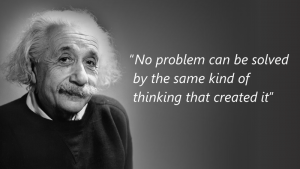
Now I want to quote Albert Einstein who (according to the Internet), once said: “No problem can be solved by the same kind of thinking that created it.”
If we want to build another hearing aid, at most we may succeed by creating another successful (money making, not hearing aids) company.
This is not my goal; I want a solution to the silent epidemic of hearing loss.
We need an alternative.
What
What is an alternative to a hearing aid?
- A consumer electronics device vs. a “medical” device (I don’t really think a hearing aid is a medical device)
- Affordable vs. expensive
- Stylish or fashionable vs. tiny and invisible
- Possibly (additionally) distributed via consumer electronics channels vs. professional channels
- Self-tuned vs. “professionally” tuned (in some countries people start distributing hearing aids following a simple 3-month on-line course, or even without any type of training)
The last item needs to be emphasized. There is a wide-spread belief supported by hearing aid dispensers and the industry that hearing aids require professional fitting. This is true, conventional hearing aids produced by hearing aid industry can only be tuned by a dispenser. The reason is that users simply have no controls, no interface to the device that would allow them to change the settings. Even if there were, the whole adjustment procedure has been made very complicated.
We believe that there is an alternative, and last year the FDA confirmed it for an unidentified BOSE hearing aid. Here is what the relevant FDA ruling stated: “Air conduction hearing aids work by capturing sound vibrations through one or more microphones. The signal is processed, amplified, and played back through an earphone placed in the ear canal. Patients can adjust the hearing aid through a mobile application on their phone. This technology enables users to fit the hearing aid settings themselves, in real-time and in real-world environments without the assistance of a health care professional.”
We support the idea. The result of our efforts is the Wear & Hear line of concept products (see www.wearandhear.com). It is based on our 20 years of experience in digital signal processing, our understanding of consumer electronics based on communication with licensees of our technologies, and our special relationships with semiconductor companies that develop chipsets and acoustic components for the consumer electronics industry. There is, still, a lot to be done. Our sense of hearing is a very sophisticated mechanism, that, once lost, is impossible to restore. But we can come close to it, at least for the majority of people and most use cases. We will work hard to make it happen. Money should not be a goal, it should be an outcome.
Our Belief
I am not that famous, but I also “have a dream”. I strongly believe that the CE industry today has the potential and the duty to improve lives for hundreds of millions of people worldwide with disabilities. Together, we can develop affordable, reliable devices that can help hearing impaired people to hear better, to help completely deaf people to “feel” sound, to help blind people navigate using tactile and audio information, to correct speech disorders such as slow speech or stuttering, and to analyze our heart rate, voice, motion, sleep patterns and other parameters to warn us about potential problems before they reach the symptom stage.
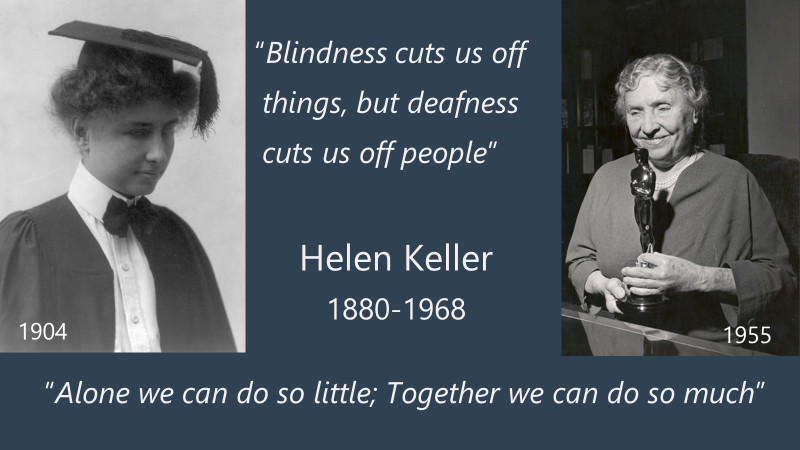
To us (the W&H team) the main challenge today is not the technology, nor even making the product. It is to raise public awareness about this alternative solution to hearing enhancement, the solution that has the potential to improve the quality of life for hundreds of millions of hearing impaired people worldwide.
My last citation will be from a famous book called “The Story of My Life” by Helen Keller, the first deaf-blind person to receive an academic degree (in 1904), who wrote: “Alone we can do so little; together we can do so much”.
Next Steps
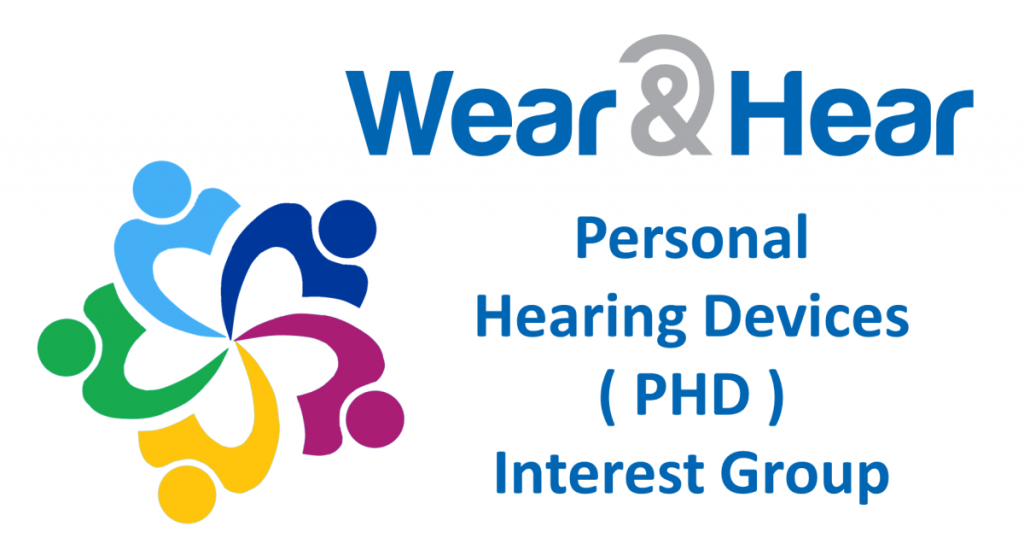
We need your input to help people hear each other better. I’ve just founded a new Wear & Hear Interest Group on LinkedIn. The purpose of this group is to provide continual updates about the growing worldwide problem of hearing impairment and our suggestions for its solution. We will discuss our Wear & Hear line of Personal Hearing Devices (www.wearandhear.com/): products we are developing, difficulties we foresee, challenges we face, problems we stumble upon, and ideas we want to discuss with you. Interested? You are invited! Click here and join us | https://www.linkedin.com/groups/12238713/
Contact Us
BeHear – Alango Technologies Ltd
2 Etgar Street
Tirat Carmel, 3903213 ISRAEL
General Inquiries
For more information about our assistive hearing products, please complete the form below.
